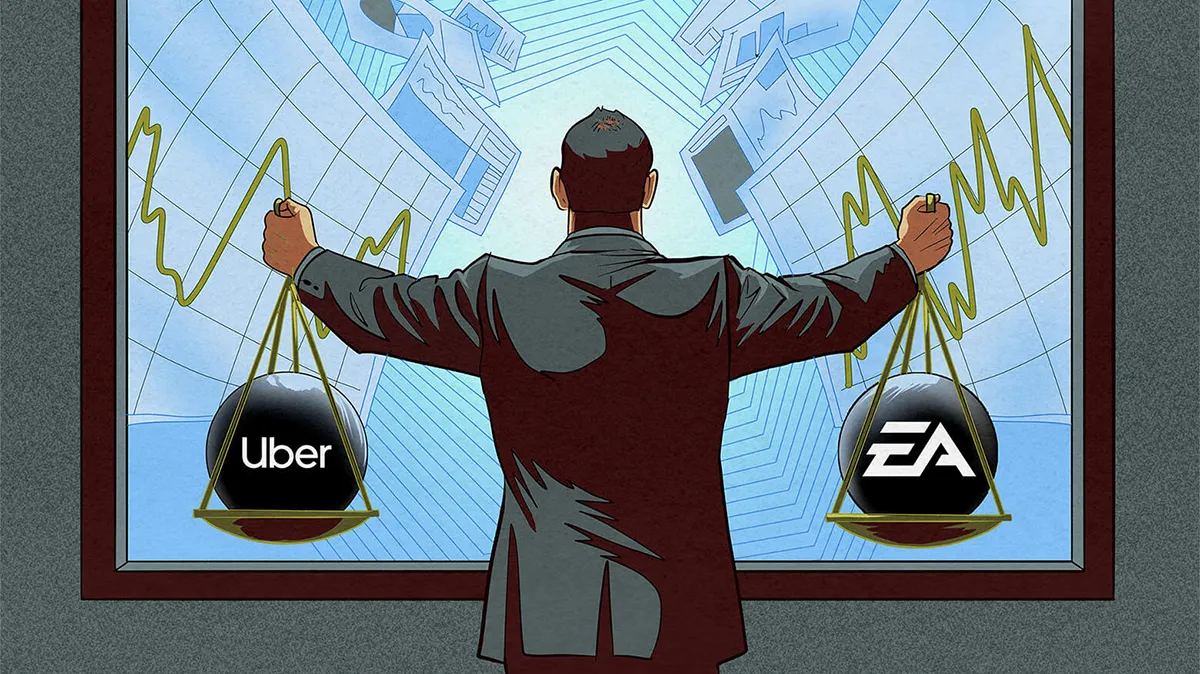Uber’s business is doing extremely well. It has reached escape velocity – the company’s expenses have grown at a slow rate while its revenues are growing at 22% a year. This caused profit margins to expand and earnings and free cash flows to skyrocket. Our investment in Uber was based on the assumption that its services would become a utility – just like water and electricity. The company’s name is synonymous with ridesharing.
I must confess that the biggest risk to our investment in Uber is me. Yes, you read that right. Uber has an incredible growth runway. It is not just going after ridesharing and food delivery, where it still has plenty of room to grow, it is also making serious inroads into the grocery market. It has terrific management that is putting a lot of daylight between Uber and its competitors.
On one hand, we are managing your portfolio as though we were managing all of your net worth (this is actually the case with most, though not all, of our clients). Thus, we see it as our fiduciary duty not to let one stock dominate the portfolio. Bad things do happen to great companies.
On the other hand, we know that some companies which have a high return on capital, a dominant industry position, and a very long growth runway reward those who can maintain long-term focus. There are very few of those companies out there. Uber is one of them.
This stock requires an incredible ability to sit on your hands (not selling or trimming), which is very hard, especially when the stock more than doubles in less than a year and becomes a very large position in the portfolio and a good chunk of the company’s earnings power lies far into the future.
Therefore, we did the second-best thing to trimming your Uber position; we hedged a portion of it using what is called a protective collar.
Before, I get into the structure of this trade, let me discuss options.
As a shortcut, our brains categorize words as negative or positive. Psychologists probably have a fancy name for it, but I’ll just call them cognitive associations. For most people, derivatives and options are associated with giant Wall Street blowups and thus have a negative association.
Although cognitive associations can be useful (most people should not touch derivatives with a ten-foot pole), they can also be harmful, as they may lead us to overlook nuances. Warren Buffett famously called derivatives “weapons of mass destruction” in the late 90s, but a decade later he amassed a huge position in them. Many things are neither negative nor positive; it is our use that makes them so. Just as a hammer can be employed as a murder weapon, it can also be used to build a beautiful birdhouse.
Our approach to options comes from our guiding principle: Do no harm (don’t blow up). We are very cautious in opportunistically using options to reduce risk in the portfolio (usually as hedges). Though use of options may still lead to losses, these losses should be bearable and not life-changing.
Let’s discuss our UBER hedge. In simple household terms, we sold a ceiling and with the sale proceeds bought a floor.
Let me explain.
When Uber was trading at $80, we sold (wrote) a call option at $100 and received a premium of $6. This created an obligation for us to sell our Uber shares at $100. We only implemented this in accounts where we own Uber shares, so it is an obligation that we can easily fulfill. We would have reduced our Uber position at $100 anyway. Therefore, we simply got paid for something we would have done regardless.
We took this $6 and used it to buy a put at $70 (an option, not an obligation to sell at $70 – think of this as buying insurance). Both contracts have the same expiration date, December 2024. At essentially no cost, we created a 12.5% floor under our Uber stock in exchange for a 25% ceiling. We love the asymmetry in this trade. Typically, put options are more expensive than call options, but not in today’s euphoric market that has been continuously rising. We took advantage of this by putting this trade on. This is how we use options sparingly and opportunistically.
If UBER goes down to, let’s say, $55, the value of our shares will decline by $25 (from $80); however, the price of the put option will go up $15 – offsetting a loss on hedged shares.
We only put this collar on a portion of Uber shares. As I have mentioned, Uber has a very bright future, but risks do happen and thus we need to manage individual position sizes.
We may also use options to hedge our portfolio in the future. I wrote about it in 2018, you can read it here.
Key takeaways
- Uber stock has performed exceptionally well, driven by strong revenue growth and expanding profit margins, validating the investment thesis that Uber’s services would become a utility-like necessity.
- The main risk to the Uber stock position is the temptation to trim it due to its rapid growth and increasing portfolio concentration, despite the company’s strong market position and long-term growth potential.
- To manage the Uber stock position without reducing exposure to its future growth, a protective collar strategy was implemented using options, creating a floor and ceiling for a portion of the shares.
- The options strategy for Uber stock involves selling a call option at $100 and using the premium to buy a put option at $70, providing downside protection while still allowing for upside potential.
- This approach to managing the Uber stock position demonstrates a nuanced use of options as a risk management tool, contrary to the negative associations many investors have with derivatives.










Mr. Katsenelson, I , very much, appreciate ALL of your communications, especially your father’s artwork. His work is quite good and I am pleased you recognize it for what it is.
I wil confess, your latest article entitled”….Mass Destruction” caught my attention. I was anticipating analyis on the subject. As worldly matters exist today, I believe it is safe to say defense stocks seem to be solid holdings for the forseeable future, unfortunately. It appears I am not alone, nor early in my perspective as many privately held, and smaller publicly held companies, have been quietly purchased by others in that industry. While I am always optimistic that things will get better, I must be a realist also.
Should you have any thoughts, I would appreciate them
Hi Vitaliy,
As a long time industry professional, I enjoy not only the content of your articles but also you’re unique ability to explain fairly complex concepts in an interesting, fun, easy to understand way – you have a gift my friend!
Your explanation to the average investor about how options work, and why you choose to deploy them, was outstanding. I haven’t employed options in my business for a long time, but after reading your explanation it makes me think I need to reconsider!
As you know, managing money for clients not only requires technical expertise but also behavioral counseling. If our clients were all logical Mr. Spocks, there would be no need to manage expectations and emotions around investment decisions. I’m sure your approach with the use of options ultimately helps keep certain clients in the game when they might otherwise capitulate. But in order for that tactic to work, you need to help them understand why you’re doing what you’re doing on their behalf and in their best interest. The way you’ve explained it in your latest piece is as good an explanation to the layman that I ever ready in my 41 years of wealth management – congratulations!
I’m looking forward to more insightful commentary from you in the future!
All the best,
Andy Ferguson
Vitaly, I very much like the protective collar strategy. I remember first learning about it when a colleague of mine advised a Dutch pension fund with these strategies in the mid ’80s. As you indicate, it most certainly helps to keep the client’s blood pressure in check, while holding on to the stock. If I recall correctly you’ve ‘owned’ Uber stock for a while and this strategy works very nicely after a good run up. Call premies are attractive to sell and put premiums are not to pricy.
I recently did the same strategy around my position in SCCO (Southern Copper). I bought the stock around $57 in Q4’22. After the recent run-up this past March, about 25% in 2 weeks, I purchased a Jun 95 put and financed it, for a $2 credit, with the sale of the Jun 105 call. Even though the stock ran further to $120 and is now around $109, I’m happy with my position going into numbers tomorrow and then look forward to receiving the dividend in early May. Depending on the volatility between now and the beginning of June I might adjust my position. If not I’ll decide on next steps in early June.
By the way I love the write ups, be it about stocks or your personal experiences. The comments around Israel were particularly thoughtful and I supported one of the organizations you mentioned.